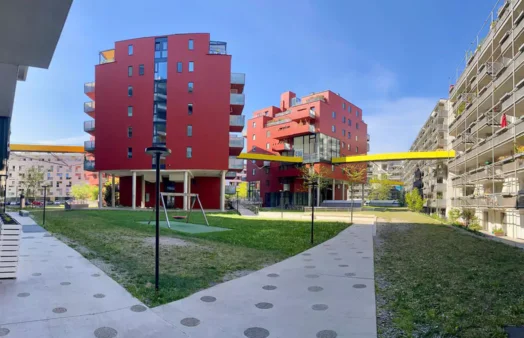03 December 2012
Claire Dunn, Sydney Morning Herald | 3 December 2012
How can co-operative enterprises build a better world? That was the question at the National Co-operatives Conference held in Port Macquarie recently as part of the 2012 United Nations International Year of Co-operatives.
Drawing 250 delegates from co-operatives spanning agriculture, retail, credit unions, building societies, housing, medical practices, automobile associations and renewable energy projects, the conference celebrated the achievements of the co-operative structure in Australia and made plans to develop the sector beyond 2012.
The director of the Australian Secretariat for the International Year of the Co-operative, Melina Morrison, said the conference message was clear – co-operatives are one of the fastest growing modes of business, and are playing an increasingly vital role in the post-GFC economy.
The first challenge, Melina said, lies in better communicating the benefits of belonging to a co-operative.
“Because co-operatives don’t have large advertising budgets, they deliver good value for money to their members but often fail to communicate them. For example, an average mortgage with a building society or credit union costs about $75,000 less over the life of the loan than if it was taken out with a commercial bank.”
A survey conducted this year by the Australia Institute discovered that while eight in 10 Australians are a member of a co-operatively-owned or mutually-owned enterprise such as a roadside assistance organisation (NRMA, RACV), a member-owned superannuation fund (AustralianSuper), or a consumer co-operative (Co-op Bookshop), only 16 per cent are aware they are.
Known as “social businesses”, co-operatives are by definition member-owned businesses with at least five shareholders, all of whom have equal voting rights regardless of their level of involvement or investment. They operate under a seven-principle set of guidelines: voluntary and open membership; democratic member control; member economic participation; autonomy and independence; education, training and information; co-operation, and concern for community.
Nationwide there are 1800 co-operative and 108 mutual banking institutions ranging widely in size and scope, with the top 100 collectively turning over $14.7 billion in 2011.
According to Melina, the “rock stars” of the new co-operative economy are smaller community initiatives, and are emerging within three main sectors – health, green energy and collaborative food distribution.
“The GFC prompted many communities to look at what it means to have local economic resilience and local economic growth.
“People are looking for institutions they can trust. Particularly in regards to food security, we’re seeing a boom in co-operative start-ups in response to the concentration of ownership of food retail and distribution.”
Moving back to her hometown of Bathurst in 2009, Leah Moulden was shocked to discover that 90 per cent of the fresh produce grown in the region was exported to Sydney. Discovering she wasn’t the only one fed up with the lack of quality fresh food, an initial meeting of minds led to the formation of the Bathurst Wholefood Co-operative the following year.
“The first 18 months we spent developing a business plan, contacting suppliers and raising funds by selling memberships for $50. It was hard at first to convince people to fork out money for a co-op that only existed on paper,” Leah said.
Selling produce at the monthly farmer’s market and boosted by a grant from Bathurst City Council, in January this year, the co-op of 40 members launched a volunteer-run shop in town open for trade three days a week.
“Having a permanent physical space has transformed the co-op,” Leah said. “People can walk in off the street and buy food that has been picked that morning. I don’t know where else you can get that.
“Schools bring in veggies from their gardens, people meet here to swap produce and because it’s a co-op that’s all OK. Restaurants are interested in using local produce and because we’re not constrained by competition we can act as a hub and pass on producer’s contacts.”
Having recently opened her own cafe a few doors down using co-op produce, Leah is enjoying another avenue to expand the local food focus.
“I’m really now seeing the potential long-term benefits to producers. While they would need 50 pallets of lettuce before they could sell to Coles, now they can bring us in what they have. They can set the price themselves, without taking out loans or being out of pocket. One free range egg farmer, for example, has recently bought more chooks knowing there is a secure market for his produce.”
Now with 270 members and a paid employee, the co-op is looking to develop an organic local food hub that matches potential suppliers with suitable horticultural land with the view that they will grow what co-op members want to buy.
“This is food for the people by the people,” Leah said. “It’s been a long haul in set-up, but it really looks like the co-op is here to stay.”
It’s a co-op success story that the food bowl of Victoria’s Goulburn Valley is hoping to replicate after the shock news last year that Heinz was moving its resident tomato factory offshore, leaving an estimated 700 people unemployed.
In a heated community meeting, the workers and farmers came up with the courageous idea of buying the factory themselves and running it as a co-operative.
The David and Goliath battle has attracted the attention of Dick Smith and Peter Russell-Clarke, who are assisting the newly formed Goulburn Valley Co-operative to raise the capital needed to purchase the factory.
Thinking of starting a co-op? Melina Morrison has three tips to help get you started:
- Seek expert advice on the constitutional and business structure
- Invest time and effort into making sure it’s a collaborative exercise
- Enlist the mentorship of other successful co-operatives
Read Smooth co-operators step up after the GFC, Sydney Morning Herald


